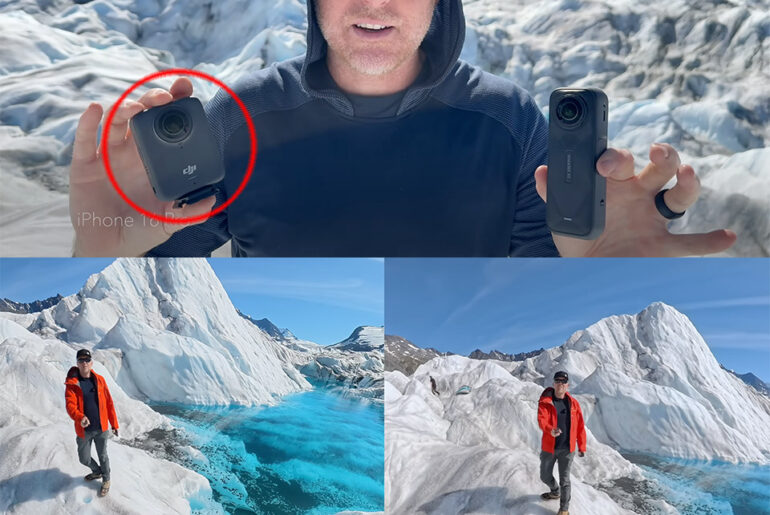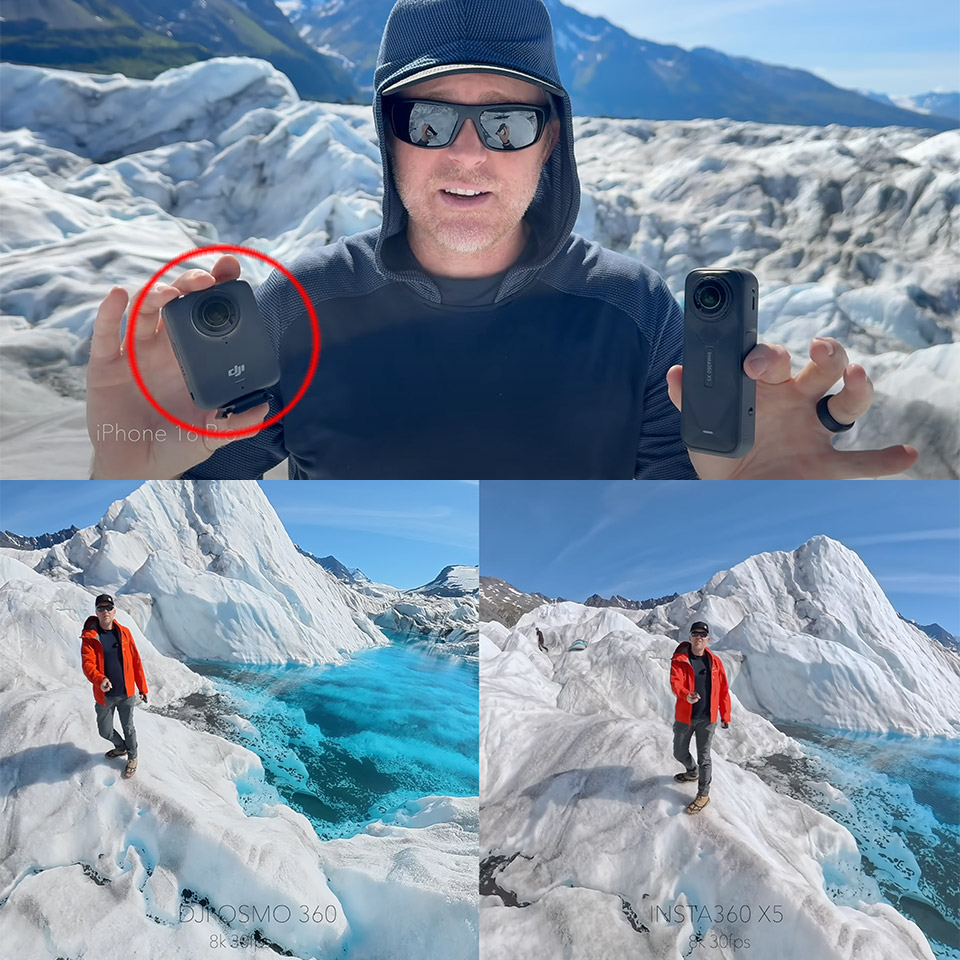
Photo credit: Jake Sloan
DJI has never been afraid to enter a crowded space with gear that quietly resets the bar. The Osmo 360, their first full 360-degree camera, dropped this summer and early adopters can’t stop posting videos that make the competition look bad. At $412.99 (was $549.99) for the standard combo, which includes extra batteries and a quick-release mount, it’s a good value in a space where $550 is considered entry level. Compared to the Insta360 X5 which was released a few months prior and is more expensive, the Osmo 360 beats it in ways that will benefit anyone looking for cleaner footage without endless toggling.
Square sensors are the heart of this camera’s appeal with a full 4000 by 4000 pixels each – DJI calls it their take on 1-inch imaging – but the real winner is how those pixels handle low light. Shoot after sunset and shadows show texture that the X5 blurs into noise because of larger 2.4-micrometer pixels that capture more light right away. Colors are consistent across the frame unlike the X5’s occasional shift towards warmer tones that requires extra time in editing software. One tester noticed that street scenes at nightfall popped with natural depth on the Osmo while the X5’s output required adjustments to match. That difference expands with mixed daylight like a hike through dappled forest gloom where the Osmo holds onto highlights in the canopy while keeping ground details sharp.
- Big Views, Brilliant Quality - Groundbreaking 1-inch 360° imaging [1] delivers excellent low-light image quality, so you get sharper shots with your...
- Stunning, Day or Night - Capture every detail with 8K 360° videos and store them effortlessly with 105GB Built-in Storage. Whether you're exploring...
- Immersive Ultra-Wide Action - Capture every thrill in super-smooth 4K/120fps and a sweeping 170° view. With your 360 action camera, relive fast moves...
The Osmo’s video capabilities go much further, beginning with native 8K at 30fps, which lasts 100 minutes on a single battery charge. Drop to 6K and you’ll have about 3 hours of runtime, which is enough to complete a full trail run without swapping packs. Furthermore, 10-bit color depth seals the deal here, collecting over a billion hues and allowing editors to modify exposure or eliminate bright skies without banding. In side-by-side tests, Osmo footage graded more easily in tools like as DaVinci Resolve and appeared ready to upload after a few attempts. Boost mode provides a 170-degree ultra-wide vision at 4K and 120fps, ideal for slow-motion footage of waves smashing or tires kicking up gravel, with less distortion around the edges than the X5 in comparable setups.
When you consider the Osmo’s cooling technology, which does not require the processor to pause during extended takes, battery life exceeds expectations. Its extremely efficient chip quietly dissipates heat, allowing you to go longer without thermal throttling, which occasionally cuts the X5 short on hot afternoons. Add to that 105GB of internal storage (no card needed for hours of raw files) and fieldwork becomes less logistical.
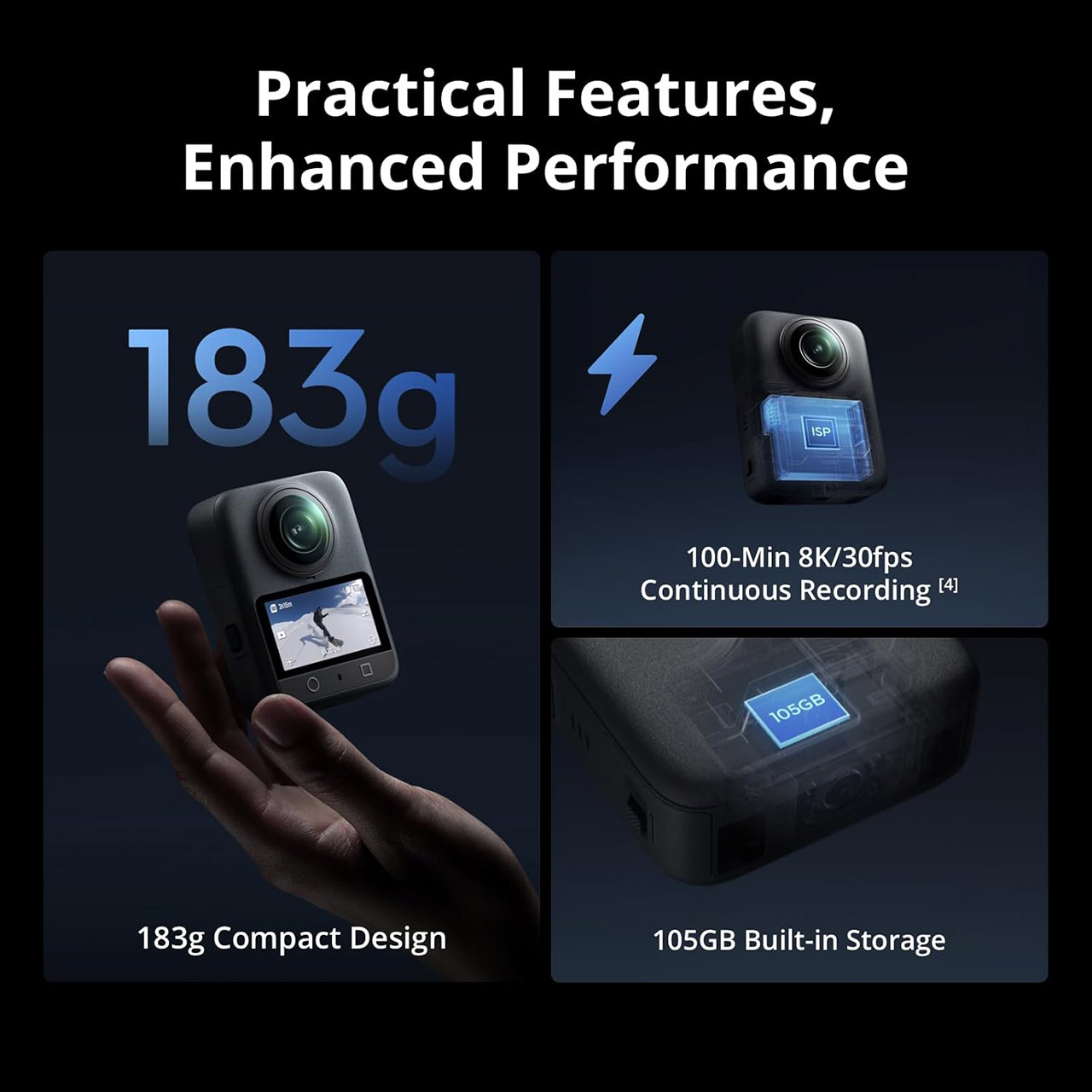
The Osmo 360 has magnetic quick release points that attach to DJI’s Action series arms or selfie sticks, and the adapter works with third-party gear, allowing you to switch between chest harnesses and helmet rigs in seconds. Audio rounds out the package with compatibility for DJI’s Mic 2 or Mini transmitters, which offer 24bit clarity and layer clear dialogue over windy backdrops.
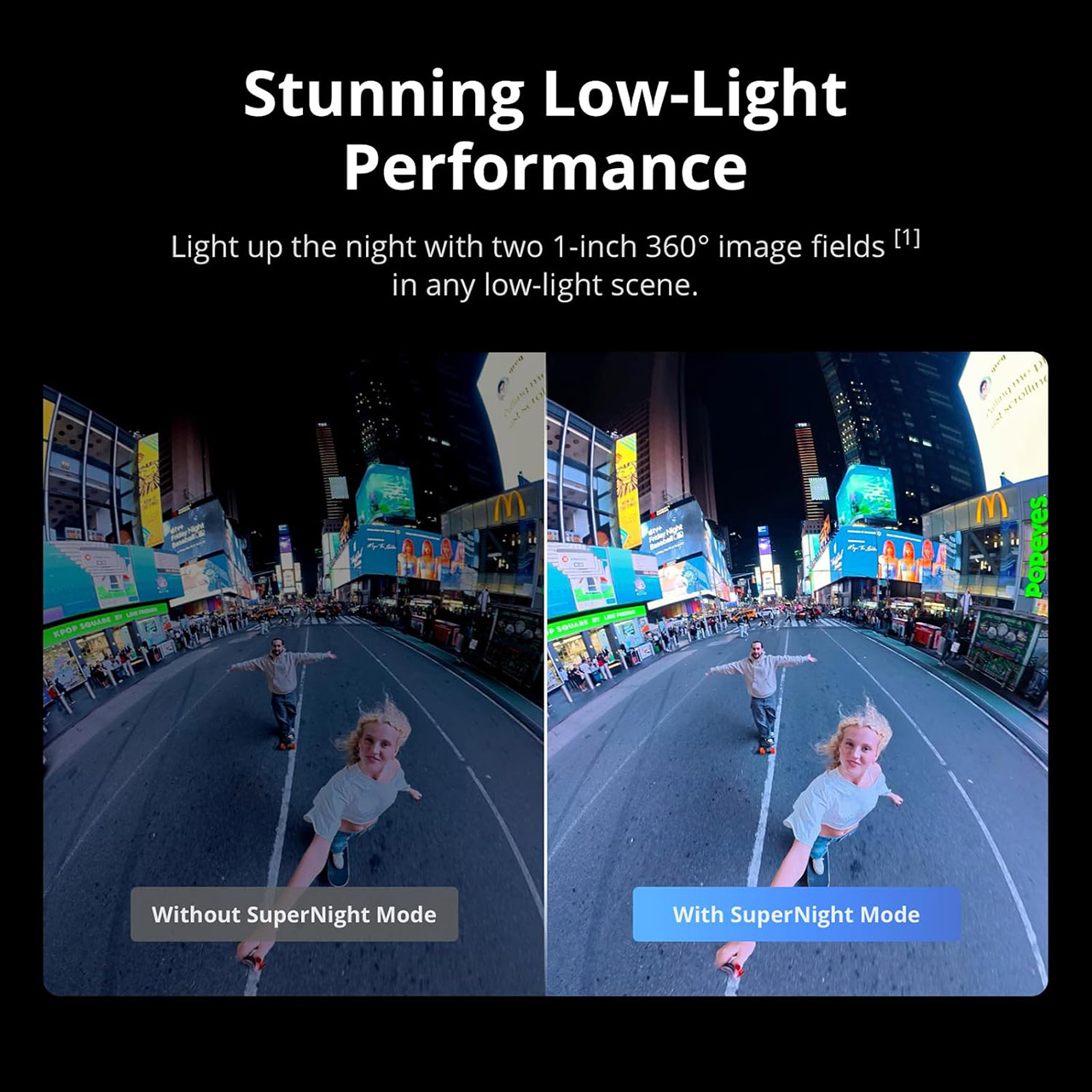
Editing workflows round out the picture of why the Osmo 360 keeps you coming back for more. The Mimo software performs rapid reframes using gyro-assisted panning, which detects your phone’s tilt and produces social media-ready movies in under a minute. DJI Studio’s desktop tools now include keyframe smoothing for professional touches, which combine clips with organic fades rather than abrupt transitions.
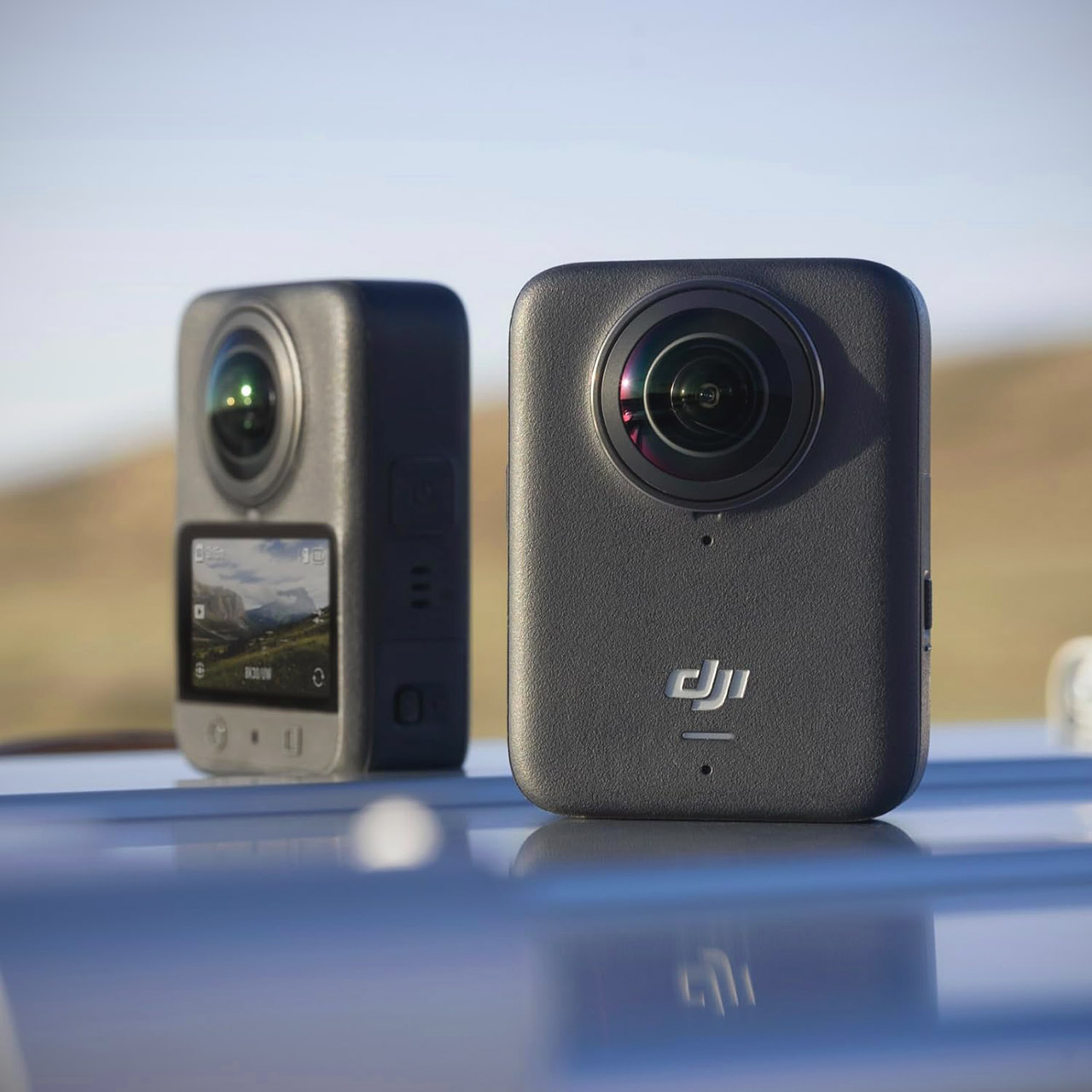
Both have IP68 water resistance, which means they can tolerate rain or splashes up to 10 meters; nevertheless, DJI detects stitching anomalies underwater, which may necessitate the use of a case while diving. Everyday hardiness shines through; the Osmo can withstand drops into rocky terrain without flinching, and cold snaps as low as -4 degrees Fahrenheit keep things rolling while others stall.

